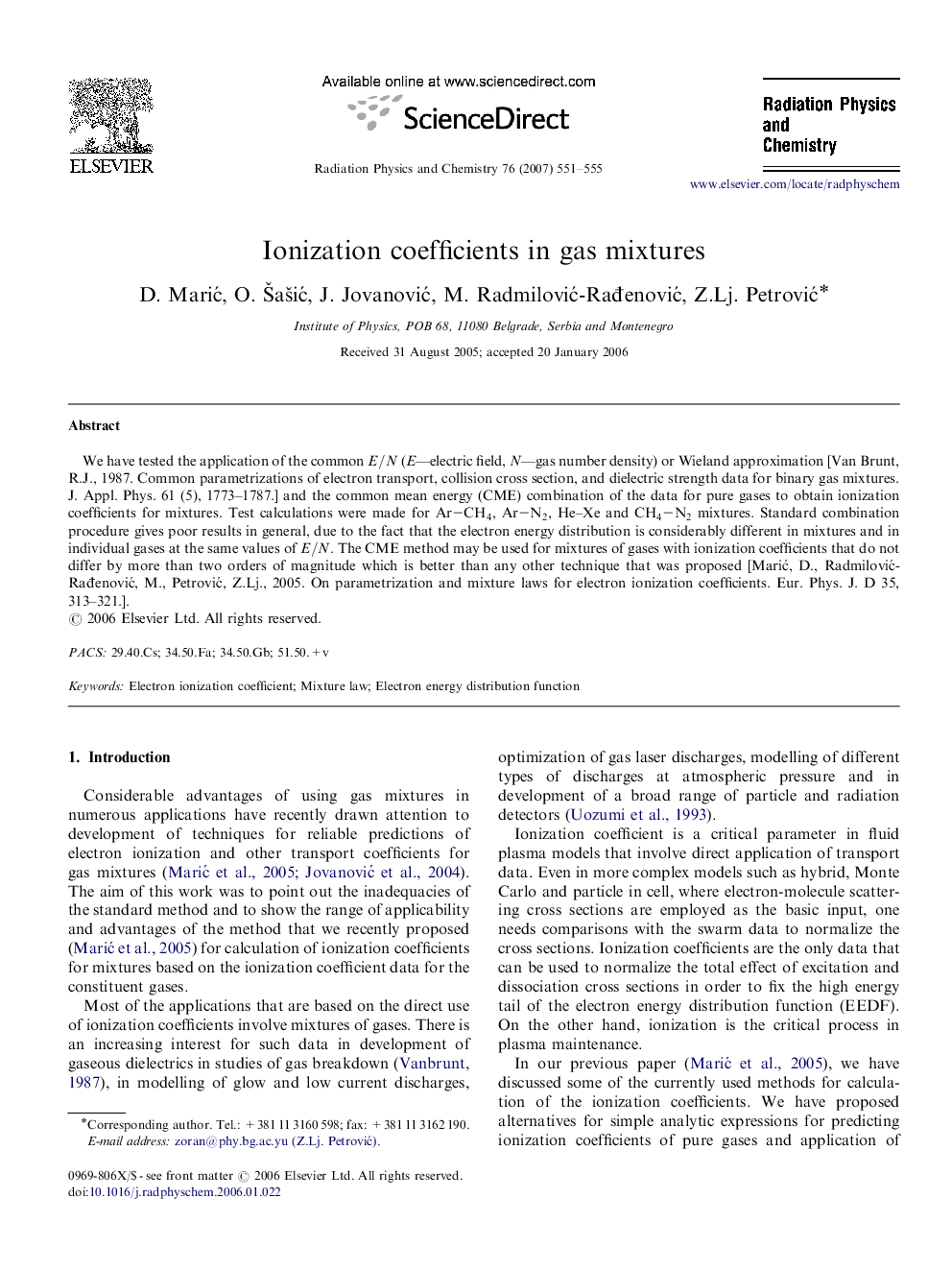| Article ID | Journal | Published Year | Pages | File Type |
|---|---|---|---|---|
| 1892337 | Radiation Physics and Chemistry | 2007 | 5 Pages |
We have tested the application of the common E/NE/N (E—electric field, N —gas number density) or Wieland approximation [Van Brunt, R.J., 1987. Common parametrizations of electron transport, collision cross section, and dielectric strength data for binary gas mixtures. J. Appl. Phys. 61 (5), 1773–1787.] and the common mean energy (CME) combination of the data for pure gases to obtain ionization coefficients for mixtures. Test calculations were made for Ar–CH4Ar–CH4, Ar–N2Ar–N2, He–Xe and CH4–N2CH4–N2 mixtures. Standard combination procedure gives poor results in general, due to the fact that the electron energy distribution is considerably different in mixtures and in individual gases at the same values of E/NE/N. The CME method may be used for mixtures of gases with ionization coefficients that do not differ by more than two orders of magnitude which is better than any other technique that was proposed [Marić, D., Radmilović-Rađenović, M., Petrović, Z.Lj., 2005. On parametrization and mixture laws for electron ionization coefficients. Eur. Phys. J. D 35, 313–321.].
